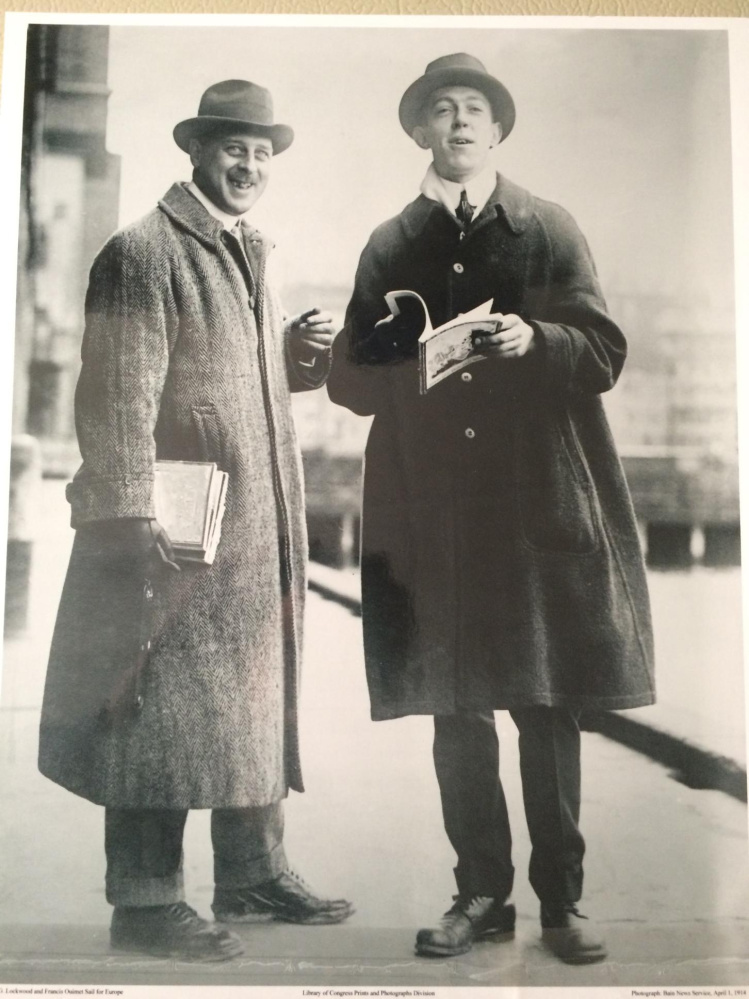MANCHESTER — With the impending 100th anniversary of the Augusta Country Club, Dr. Mark Laney and Tom Oliver were researching the club in which they’ve been members for decades.
“My fascination has been with the course architect,” Laney said.
He sat in the Augusta Country Club clubhouse. Old photos of the club were spread across the table, along with his own research.
Augusta Country Club’s original nine holes, now the back nine of the course, opened late in summer 1917. For decades, those nine holes have been touted as a Donald Ross design, the work of one of the most renowned golf course architects of all time.
“We all believe it’s Donald Ross. I want it to be true,” Laney said.
The problem is, Laney and Oliver’s research makes it hard to continue believing Ross designed those nine holes. In conducting their research, Laney and Oliver stumbled upon a mystery. Did Ross design those original nine holes at the Augusta Country Club? If Ross didn’t, who did?
In the first half of the 20th century, Ross was the preeminent golf course designer in the United States. A Scottish immigrant, Ross designed more than 400 golf courses before his death in 1948. Among Ross’ most known courses are Pinehurst No. 2 in North Carolina and Oakland Hills just outside Detroit, Michigan.
For golfers, having a Ross course is like having a Picasso hanging in your living room. A Ross course is like real estate. They’re not making any more. To many, a Ross course is a walkable, playable, green work of art.
When trying to confirm Ross designed Augusta’s course, Laney looked for the blueprint. It can’t be found. A blueprint would be a simple way to confirm Ross as the designer. Laney said if the course ever had the blueprint it was likely lost in the fire on Halloween in 1925, which destroyed three quarters of the clubhouse.
“Typically, there would be two or three copies of these blueprints,” Laney said. “I just wanted to find out, if it’s a Ross, where is our blueprint?”
Oliver spoke to Jan Ludwig, the secretary of the Donald Ross Society. Ludwig said no plans for the Augusta Country Club exist at the Donald Ross Society archives.
Laney and Oliver can find no contracts between the club’s founders and Ross. What they did find, however, is a record of payment to Arthur G. Lockwood.
Lockwood also was a golf course designer, although Laney could find no record of him in any catalogue of golf course architects of the era. Lockwood also was a pretty fair player in his own right, winning Massachusetts Amateur titles in 1903, 1905 and 1906.
Laney thinks that amateur playing career may be the reason Lockwood is not listed among course architects of the early 20th century. At that time, amateur status was held in extremely high regard. If Lockwood received payment for anything involving golf, including designing courses, he would lose his amateur standing.
“So my theory has been that Lockwood, who knew how to earn a buck, kept his design work quiet as he also enjoyed his amateur status,” Laney said.
Laney did find the club paid Lockwood $114 on Aug. 1, 1916, for “services to date on grounds.” Laney also found payments to Carl Rust Parker, a field supervisor and landscape architect from Portland. Again, he checked with the Ross Society, which found no records of either Lockwood or Parker ever being employed by Ross.
Laney found a news clipping from Bangor in May 1916. At the time, Lockwood was on his way to Bar Harbor to work on a golf course there, Kebo Valley. Lockwood was in Maine at the time Augusta Country Club was being built. The timeline, along with the payment history, makes Laney and Oliver think it was Lockwood — and not Ross — who designed Augusta’s original nine holes.
“I didn’t believe it at first. I was disappointed,” said Oliver, who has been a member of Augusta Country Club for 50 years. “I was a little leery about (sharing) it. I was afraid it might offend somebody.”
It’s possible Lockwood saw Ross as an inspiration, Laney said.
“Back then, Lockwood would have known Ross. It was a small golf community,” Laney said. “I think Lockwood was familiar with Ross’ design techniques.”
In 1927, Ross did work on a golf course in Augusta, Georgia. It’s conceivable that somewhere along the way, somebody either at the Donald Ross Society or Augusta Country Club mixed up the two Augustas, and a legend was born. It’s an easy and innocent mistake.
None of this changes the fact that, for a century, the Augusta Country Club has been run by so many good people. It doesn’t change the fact that they’ve built it and turned into one of the gems of Maine golf.
Is it disappointing? Sure. It’s like being told for years that you’re descended from royalty. Then you take a DNA test and find out you’re not royalty at all, your ancestors were as common as a cold.
Unless the original blueprints of the course turn up, or a record of payment to Ross, we may never know who designed Augusta Country Club’s original nine holes. That brings up a question for the club’s next century: If you enjoy playing them, does it matter?
Travis Lazarczyk — 861-9242
<URL destination=””>tlazarczyk@centralmaine.com
</URL>Twitter: @TLazarczykMTM
Send questions/comments to the editors.



Comments are no longer available on this story